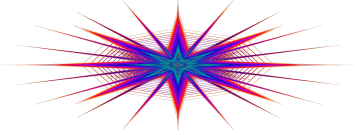 Rife Plasma System Components
Rife Plasma System Components Rife Plasma System Components
Rife Plasma System ComponentsWorks with the Spooky2, UDB1108S, GB-4000 or any signal generator with TTL Output
( Click on the picture for a larger view )
The 500 watt PA3 plasma tube amplifier is furnished assembled and tested, complete with a high-efficiency fan-cooled heat sink assembly.
The price of the PA3 assembled and tested with the HS2 heat sink and fan is $265.00
(Kit version also available,
less HS2.)
|
The PA3 amplifier is designed to be driven by a signal generator such as the UDB1108S which generates a duty cycle modulated square wave TTL output signal of 0 to +5 volts amplitude. The PA3 may also be driven by any frequency generator that outputs an audio sine wave signal with a peak-to-peak amplitude of 4.5 to 7.5 volts. The PA3 generates its own 3.1 MHz carrier signal. It is designed to be used with wide-range audio frequency generators. Audio Modulation frequencies between 4 and 400,000 Hz may be used at full power. Higher modulation frequencies are usable at reduced power output. The powerful but quiet cooling fan mounted on the rugged HS2 heat sink allows the PA3 to be operated at full power for as long as the researcher desires. A separate power supply for the cooling fan is not needed, because the PA3 provides power for the fan. The PA3 is fitted with the Quick Change option, so the power amplifier MOSFET may be easily and rapidly replaced should the need arise - no soldering is required. Two power supplies are required to operate the PA3, one supply of +20 volts for the logic circuitry and cooling fan, and another of between +50 to +175 volts, depending on the type of plasma tube being used. Please refer to the operating manual for full technical details. The powerful but quiet cooling fan mounted on the rugged HS2 heat sink allows the PA2 to be operated at full power for as long as the researcher desires. A separate power supply for the cooling fan is not needed, because the PA2 provides power for the fan. The PA3 is fitted with the Quick Change option, so the power amplifier MOSFET may be easily and rapidly replaced should the need arise - no soldering is required. Two power supplies are required to operate the PA3 one supply of +20 volts for the logic circuitry and cooling fan, and another of between +50 to +175 volts, depending on the type of plasma tube being used. Please refer to the operating manual for full technical details. The PA3
has been designed so that its output matches a standard 50-ohm load
impedance, making it possible to connect the output of the PA3 to a
conventional antenna tuner or to the our LC31 coupler system. Please
download and read the operating
manual for the PA3 before placing your order.
It is important to read and understand the information about using an
adequate heat sink with the PA3. Although the PA3 is physically very
small, it handles a lot of power. Just as with any high power RF
amplifier, a substantial heat sink is required for proper operation.
PA3 Full Technical
Specifications: DC Power Supply
Input:
Input Impedance:
Input Drive Signal
Requirements:
Carrier Operating
Frequency:
RF Power Output:
For a duty cycle of
1% to 89%:
2
Hz to 400 KHz For a duty cycle of
1% to 98%:
3
Hz to 400 KHz For a duty cycle of
1% to 99%:
4
Hz to 400 KHz 3.12 VPP for 37% duty
cycle (for Maximum Sidebands). 5.0 VPP for 50% duty
cycle (for Normal Operation). 5.58 VPP for 58% duty
cycle (Clipping of input signal occurs above
this level). |
The left side photos are of the PA3 output waveform across a 50-ohm dummy load.
The right side photos are of the PA3 output waveform across a Cheb 8-inch Phanotron tube.
The PA3 was coupled to the Phanotron tube using the 3.1 MHz link coil coupler.
The carrier frequency was 3.1 MHz. The modulation duty cycle was approximately 50%.
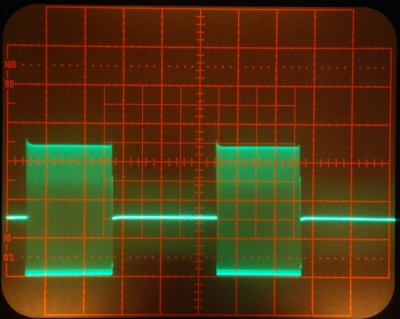
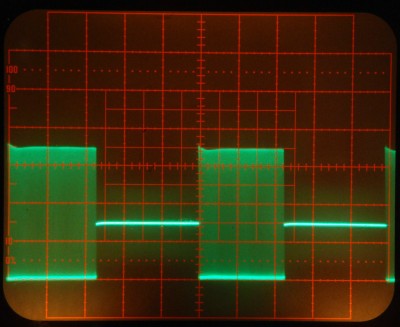
Modulation frequency 20 Hz.
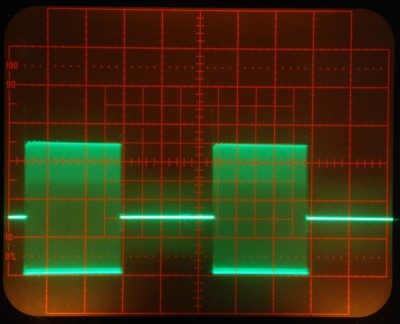

Modulation frequency 2 KHz.
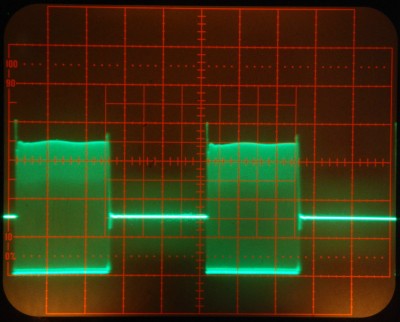
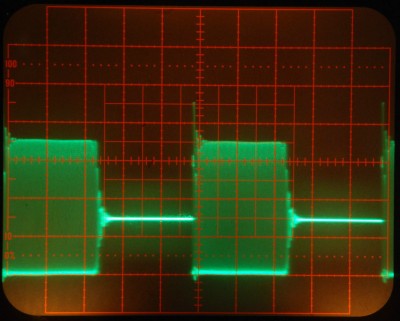
Modulation frequency 20 KHz.
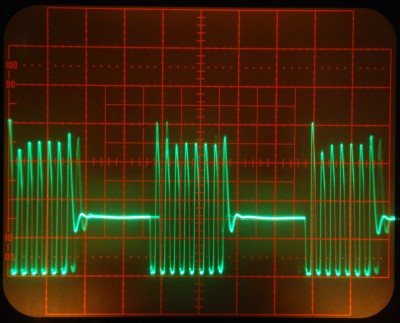
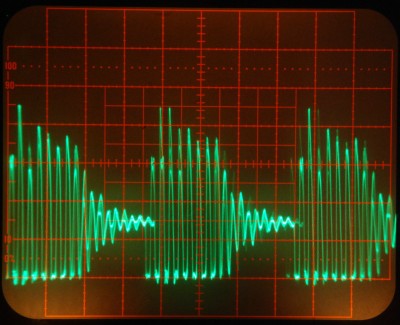
Modulation frequency 200 KHz.
This web site and all contents including pictures, text and diagrams is Copyright © 2012 - 2020 by Ralph M Hartwell.